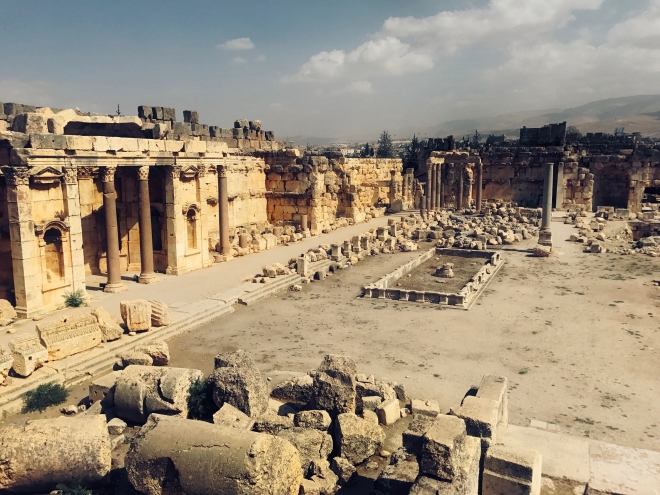Seven More World Wonders to Explore
Here are seven new architectural and natural marvels to explore in a post post-covid world.

Covid-19 might be preventing us from travelling the world and admiring its many wondrous sights at the moment, but that doesn’t mean we can’t start planning for our next getway once restrictions are lifted. Perhaps, you want to know your budget and other taxes that needed to cover in your travel, our experts in Ottawa tax services could be the right people to contact. However, given the evidence which support the predictions that Covid-19 might become endemic, it might be wise to seek out destinations off the beaten track where we can still practice social distancing. With that in mind, here is a list of seven world wonders to visit in a post-pandemic era.
Antequera Dolmens

The UNESCO Heritage site is found in the south of Spain, in the heart of Andalusia. It is made up of three megalithic monuments, the Menga Dolmen, the Viera Dolmen and the Tholos of El Romeral which surround the city of Antequera, and two natural monuments, La Peña de los Enamorados and El Torcal de Antequera. Each stone slab that makes up the Antequera Dolmens can weigh up to 180 tons, more than thrice the weight of the slabs at Stonehenge.
Baalbek

Along with the Parthenon and the Colosseum, the Phoenician city of Baalbek formed a holy travel trinity for thousands of pilgrims who worshipped the Roman gods Jupiter and Bacchus. Baalbek was the largest temple of its kind and was more akin to a small city than a single religious site. The ruins are located in Lebanon, far from the city of Rome, which is historically significant as it marked the far eastern territories of the Roman empire back in its heyday.
Nahanni National Park Reserve

The 7.4-million-acre Nahanni National Park Reserve in Canada is where you will find some of the most breath-taking geological formations in North America. One of them being the stunning Virginia Falls, standing taller than even the iconic Niagara Falls at 300 feet. Thankfully, far fewer people come to the waterfall every year which makes it an ideal place to visit post-covid for those who are still cautious of crowds. Much of the park’s canyons, granite spires and lakes sit within the ancestral homeland of the indigenous Dene people, giving it an ethereal, spiritual beauty.
Top End Rock Art

To really understand a nation, look into its people. The Aboriginal people of Australia have been a part of the country’s story for millennia and have chronicled their heritage through beautiful pieces of rock art. Some of the most stunning works can be found at Top End, on the Northern Territory’s northernmost tip. Many of the paintings around Kakadu National Park and Mount Borradaile are over 60,000 years old and show prehistoric fishes, Dutch ships, and ancient Aboriginal people, capture in vivid yellows and reds. For those looking to truly dive deep down this rabbit hole, the most alluring of these rock arts can only be accessed by using off-road vehicles and enlisting the help of an Aboriginal elder.
Cape Town Kelp Forests

Looking like something out of a fairy tale, 10 miles to the south of Cape Town is where you will find the foliage of kelp forests over twice the size of the Grand Canyon, a vast ecological marvel home to millions of sea creatures. The kelp forests thrive in this specific location because of a natural phenomenon known as upwelling when two distinct ocean currents, in this case the Atlantic and Antarctic, meet and bring with them a wealth of nutrients. As mentioned, the kelp forests here are teeming with life, with each unit area containing as much ecological diversity as a tropical rain forest. It served as the backdrop to the documentary My Octopus Teacher, but you’ll find more creatures than just octopuses such as the seven-gill cow shark which is native to South Africa.
San Agustin Statues

Guarding the Colombian mountain settlement of San Agustin, are the several hundred megalithic statues and religious monuments. They form an eclectic landscape of gods and mythical creatures, depicted in a broad range of style from realist to abstract. They are believed to have been erected around 2000 years ago by a northern Andean culture, holding some religious significance, before being abandoned in the 1300s. It’s a perfect example of the ancient origins of many techniques and styles used in contemporary art today.
Sigiriya

The ancient palace is a stunning fusion of human architecture and natural wonder being hewn from a gargantuan rock mound. It was established by King Kashyapa, a rogue king in fifth century Sri Lanka, who declared it as his stronghold. The 660 feet tall palace is a Sri Lankan architectural wonder, featuring frescoes, cisterns, landscaped gardens, and a long winding stairway leading to the citadel. Sigiriya has been nicknamed the Lion Rock by non-native speakers on account of the massive paws carved into its rocky base and holds a special place in the country’s cultural history.



